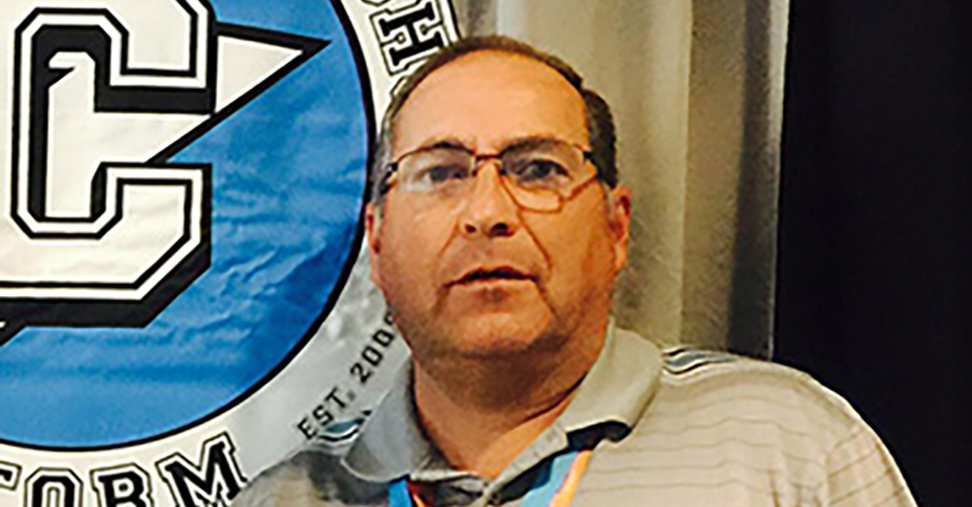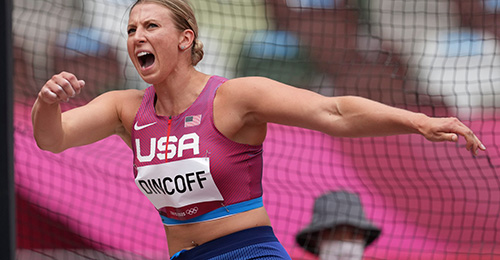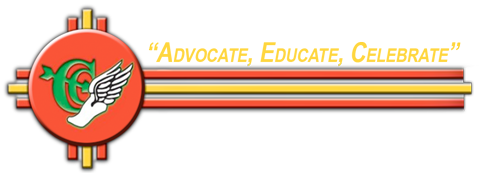Coaching the Long Jump
Austin brobst
Accomplishments at unm
- Deanna Young – 20’7”/ 43’10 ¾”
- Alesha Walker – 21’7”/ 11.81
- Sandy Fortner – 20’6 ¼”
- Precious Selmon – 20’0”
- Yeshemabet Turner – 20’2”/ 41’11 ¼”
- Casey Dowling – 19’5 ½”/ 40’0”
- Kendall Spencer – 26’ 8 ¼”/ 10.44
3 keys to success
- Strength – On the track/weight room
- Technique – sprinting/jumping
- Speed – build equally with other 2
Sprint mechanics
- Toe up
- Heel up
- Thigh up
- Hips tall
- Step over the opposite knee
Sprint drills
- Toe Taps
- A-Skip
- B-Skip
- C-Skip
- Fast Leg
- Backwards Run
- Ankles, Shins & Knees
- 1,3,5 Pause
- Straight Leg Shuffle
- Skip and Scoop to Stride
K.I.S.S.
- Keep
- It
- Simple
- stupid
- Use drills and exercises that utilize the SAME MUSCLES AND FORCES used in the event.
LONG JUMP BASICS
- 90%-95% of Jump Distance is a result of Horizontal Velocity at Take-Off.
- Which means teach your jumpers to sprint with proper SPRINT MECHANICS.
4 main components OF THE LONG JUMP
- Approach
- Takeoff
- In-flight
- Landing
7 phases of the Long Jump
- Start (Walk In or Standing)
- Acceleration
- Maintenance
- Preparation for Take Off
- Take off
- In-Flight
- Landing
approach
- Steps depends on skill level:
- Beginner Woman: 12-16
- Elite Women: 16-20
- Beginner Men: 16-20
- Elite Men: 18-22
Distance should be a controlled run, if athlete is not able to control DO NOT advance.
- Phases of Approach
- Start
- Acceleration
- Maintenance
- Preparation for Take Off
Developing the Approach
- The approach must be run over and over and over and over and over and over again.
- Approaches precede technical work in the daily training.
- Some days you can do approaches before the sprint workout.
Energy Distribution of the Approach
- Not “Slow to Fast” – instead think of it as gradually trying to get faster.
- 4 parts of energy distribution
- Acceleration
- Transition/Get Tall/Sprint
- Turn Over/Frequency
- Take Off
How to Start?
Standing Start
Vs.
Walk-In Start
Acceleration/Max Velocity in the approach
- Most issues with the approach can be traced back to the the acceleration out of the back.
- The athlete must be able to develop a certain rhythm to the approach.
- Vince Anderson Progressive Acceleration Chart
- After accelerating you want your athletes to achieve a good sprint position – a good sprint position means the athlete will typically be able to execute good take off mechanics.
Training for the Approach
- Short sprints (10, 20, 30) from 3 point
- Sled Pulls/Tire Pulls/Bullet Belt
- Weight Vest Flying 30’s (Max Velocity)
- Acceleration Model (Vince Anderson)
- Wicket Drills (Vince Anderson)
- Short Speed Endurance (60m Sprints)
4 main components OF THE LONG JUMP
- Approach
- Takeoff
- In-flight
- Landing
Parts of the takeoff
- Preparation/Increased Frequency
- Penultimate Step
- Takeoff
Preparation/Penultimate
- Conscious acceleration 4-6 steps out from the board.
- Acceleration should not affect forward displacement.
- Frequently athletes will prepare for the board too far out meaning the hips are too low for optimal take off angle.
- Contact needs to occur under the body or slightly in front of body.
- Foot needs to be dorsiflexed prior to take off.
- Rocking heel to toe action, similar to rocking chair.
- Cue stepping over the ankle.
Quickly determining proper take off angle
Good
Bad
Take off Drills
- Power skips
- Run-Run-Jump/Continuous Take Off
- Hurdle Jumping
- Pop Up Drill (6, 8, 10, 12, Full)
- Short Approach Jumps (6, 8, 10) – NEVER PERFORM FULL APPROACH JUMPS IN PRACTICE!
4 main components OF THE LONG JUMP
- Approach
- Takeoff
- In-flight
- Landing
different styles – In-flight
Hang
Vs.
Hitch Kick
Hang
Hitch Kick
The Secret to in-flight & landing
- There is no way to change the flight path of a jumper once in the air. The flight path of a jumper is predetermined by the take off angle.
4 main components OF THE LONG JUMP
- Approach
- Takeoff
- In-flight
- Landing
Key aspects of the landing
- The goal is to have as tight of a landing as possible.
- This is accomplished by having the butt go into the indentation made in the sand by the initial contact of the feet.
- If performing a hang the knees need to remain as tight as possible on all planes to help keep the landing tight.
- The feet should make contact first, the arms should be behind the torso. When the feet hit the ground the arms should come forward quickly. This will help get the butt in the same hole as the feet, thus minimizing distance lost. The feet will commonly come up in the air.
- Newton’s 3rd Law – for every action there is an equal and opposite reaction. In long jump this revolves around the hips and finishing/closing the landing.
Learning the landing
- Land with feet together
- Land with feet together then squat
- Land with feet together, squat, then kick out
Landing drills
- Standing Long Jump (from ground or elevated)
- Standing Long Jump onto high jump or pole vault mat
- Jumping landing on high jump or pole vault mat
videos
Questions
contact
Austin Brobst
This email address is being protected from spambots. You need JavaScript enabled to view it.
505-803-2974


 Larry Chavez is the 112th inductee into the NMAA Hall of Fame, with a career in education that spanned over 38 years. He devoted his entire career to the youth of New Mexico.....
Larry Chavez is the 112th inductee into the NMAA Hall of Fame, with a career in education that spanned over 38 years. He devoted his entire career to the youth of New Mexico..... Newell, a graduate from Highland High School and 3-time State Champion, has attended two Olympic games for team Canada.
Newell, a graduate from Highland High School and 3-time State Champion, has attended two Olympic games for team Canada. Former New Mexico State volunteer assistant track and field coach Rachel Dincoff reached the pinnacle of her event...
Former New Mexico State volunteer assistant track and field coach Rachel Dincoff reached the pinnacle of her event...